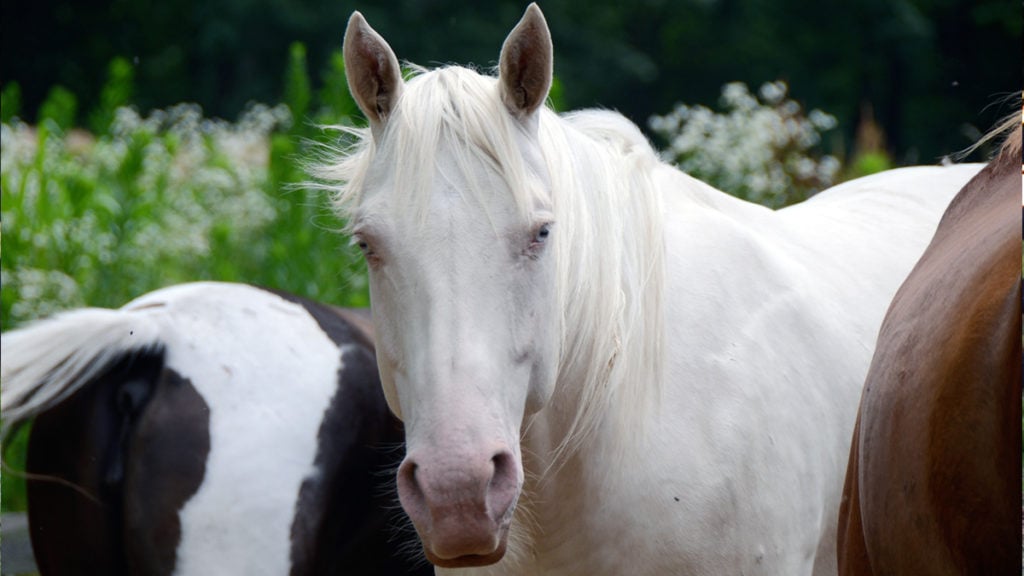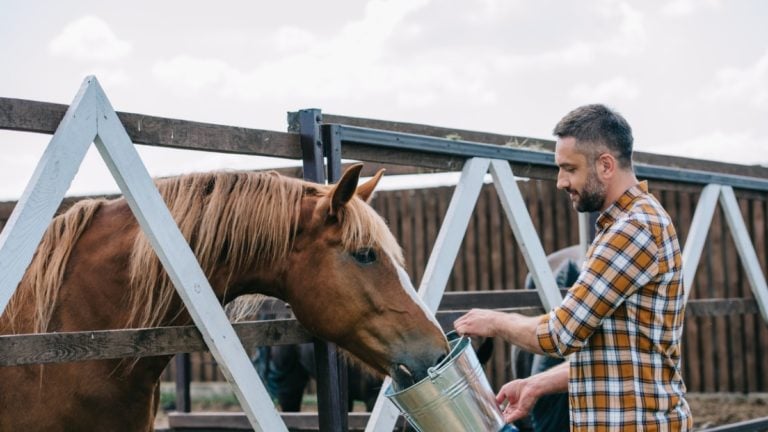Between their neighs and whinnies, pinned ears and nickers, sometimes it seems like horses have their own language. As you get get to know horse breeds, horse colors and general horse terminology, you will realize it really is its own language. Check out our beginner’s guide to horse terms below to start speaking like an equestrian in no time!
Different Ages and Sexes of Horses
When it comes to horses, knowing their appropriate life stage is the first step in ensuring proper nutrition and horse care. “It’s important to be able to differentiate between different sexes and ages of horses, as we must cater to each horse’s individual needs,” explains Emily Byczek, horseback riding instructor at Crimson Stables in Bloomington, IN. “Older horses often need extra care (supplements, injections, etc.) to maintain good health. However, at the same time, younger horses need to be watched carefully, as well.” Having different terms for different aged horses allows horse owners and professionals alike to better communicate and provide for each horse’s needs.
• A mare is a female horse.
• A gelding is a castrated male horse.
• Also known as a stud, a stallion is an uncastrated, or intact, male horse.
• A foal is a newborn horse.
• A weanling is a young horse, often between 6 and 12 months old, that has just been weaned from its mother.
• A yearling is a year-old horse.
• A filly is a female horse under 4 years old.
• A colt is a male horse under 4 years old.
Horse Body
Big or small, energetic or laid back, different sized horses and horses with different workloads have different nutritional needs. Some horse breeds are “harder-keepers,” meaning that it may take a little bit of extra grain to keep weight on them, while others can be perfectly stout living off hay alone. Similarly, some horse breeds are better suited for certain disciplines, explains Byczek. “For example, draft horses, which are very large and strong, are great for pulling carts and carriages. Thoroughbreds are known to have endurance and are well-suited for eventing, jumping and racing.”
• Horse height is measured in hands. One hand is equivalent to 4 inches.
• Conformation is how a horse’s body is composed and how correct his build is.
• A pony is a full-grown horse under 14.2 hands, or 58 inches.
• A lame horse is one that shows any gait abnormality, often caused by pain or discomfort.
• A sound horse has no gait abnormalities and exhibits parallel and even movement.
• Gaits are the different speeds of movement that a horse exhibits.
Getting to know your horse and what is normal for him and his gaits makes it easier to detect any abnormalities, like lameness. Identifying problems early is the most effective way to help him get back to feeling his best!
Horseback Riding
Horse care and horseback riding use a wide array of terms that help describe everything from a horse’s movement to the equipment used. “As with any sport, the equine industry has a unique vocabulary,” says Byczek. “It takes time to become familiar with the terms, but once acquainted, it becomes part of your natural vocabulary.”
• An equestrian is a horseback rider.
• Disciplines are the different categories of competitive horseback riding.
• Tack is the equipment used for horseback riding.
Now that you’ve got a quick guide to horse terms, you’re ready to saddle up and enjoy the ride! Looking for a name for your new horse? Check out our list of top horse names.
Share:









